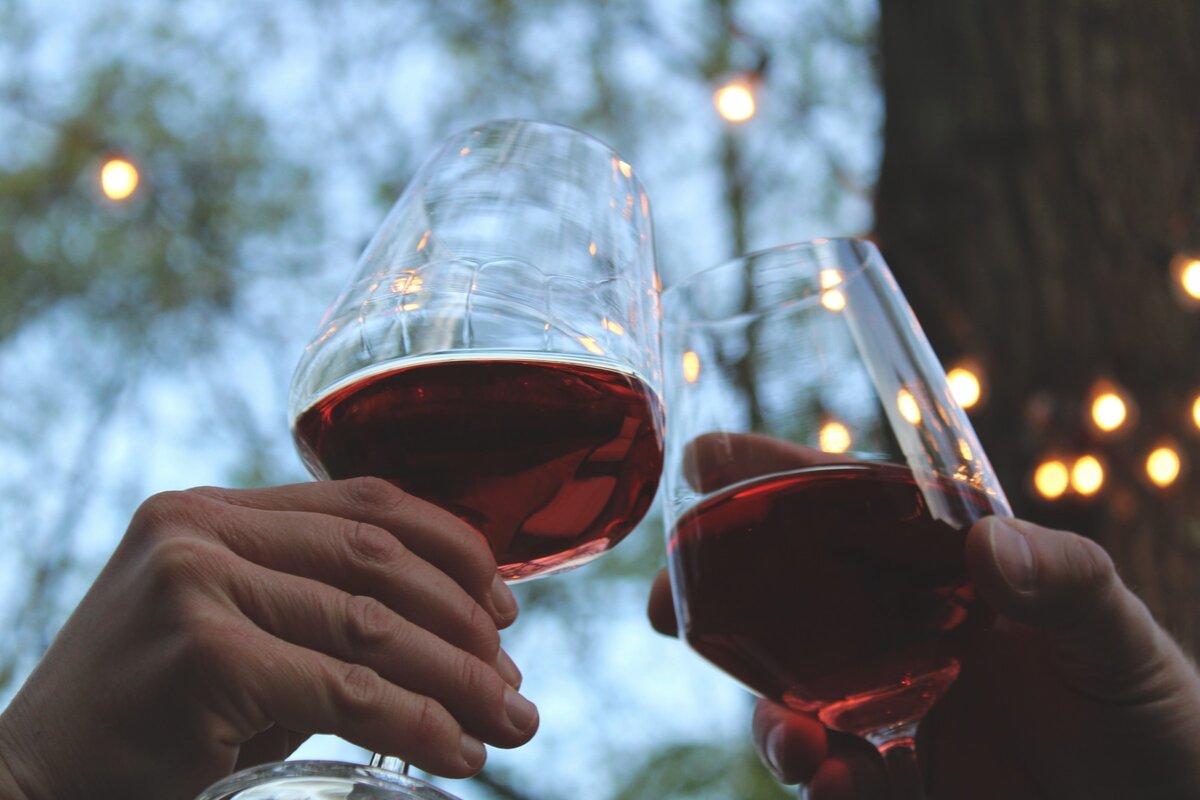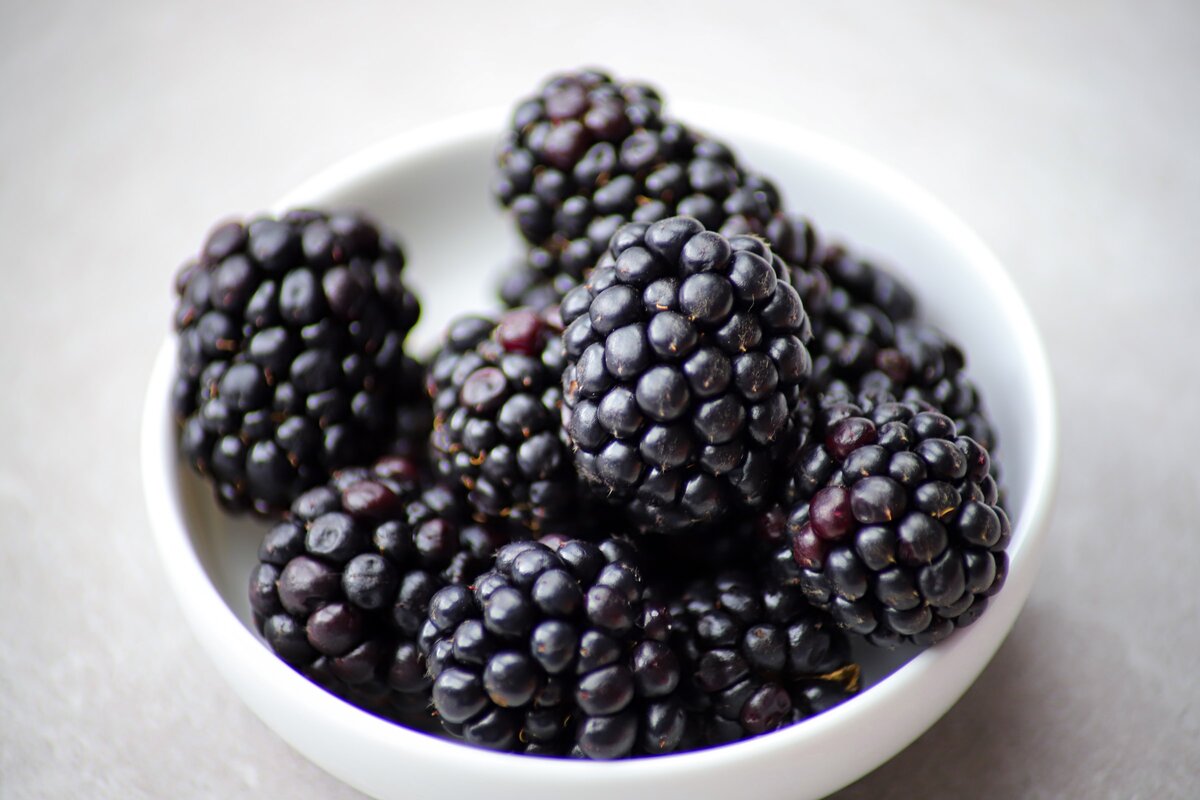When most people think of winemaking, they think of grapes. However, did you know that wine can also be made from blackberries?
Blackberries can elevate your wine-drinking experience. And the best news is, you don’t need to be a sommelier or wine expert to make blackberry wine at home. Read this guide from Taste of Purple to make blackberry wine.
Related: How to Make Dandelion Wine
Blackberry Wine: Flavor Profile

If you enjoy fruity red wines, you’ll fall in love with blackberry wine. Blackberry wine offers a smooth and balanced flavor, similar to a Malbec or Merlot. Homemade blackberry wine tends to be aromatic and complex.
Like with any other type of wine, the flavor profile of your blackberry wine depends on the quality of the fruit you make it with. Select ripe blackberries bursting with flavor for a rich wine.
Additionally, keep in mind that your genetics can contribute to your wine preferences. If you were born with high taste sensitives, you may find that dry wines are overwhelmingly bitter. Fruits with high tannin levels give dry wine a bitter flavor. Blackberries are low in tannins, resulting in a sweet wine that is easy on the palate.
If you’re looking for more delicious wine recipes, check out these fun and easy wine slushies!
Is Blackberry Wine Good for You?
In addition to being delicious, blackberries offer many health benefits. Like other berries, blackberries are rich in antioxidants, helping to lower your cholesterol and reduce the risk of a stroke or heart disease.
Should You Use Fresh or Frozen Blackberries?
You can use fresh or frozen blackberries to make your wine. However, there are a few things to keep in mind before choosing between fresh or frozen:
Fresh Blackberries
Make sure to select ripe berries if you decide to use fresh berries. Pick through your blackberries to remove anything that is moldy or unripe.
You can also whirl your berries in a food processor to break them up, and set them in sugar before you begin the winemaking process. This process is known as maceration, and it helps draw out the berry’s juices. While it isn’t necessary to do this beforehand, many people enjoy it as a part of the winemaking process.
Frozen Blackberries
You can skip the maceration process if you choose to use frozen blackberries. Thawing frozen blackberries breaks them down in a manner that is similar to the maceration process.
Related: How to Make Mulled Wine at Home
Do you need to add sugar to the wine?
While you can technically omit sugar from any wine recipe, not adding sugar will result in a very dry wine. Adding sugar can also help bring out the fruitiness of the wine, so we always recommend adding at least a little.
However, if you prefer an extremely dry wine, omitting the sugar may be the right choice for you.
How to Make Blackberry Wine at Home

Now that you know some blackberry wine basics, let’s talk about how to make blackberry wine at home. Making blackberry wine at home is a slow process, so be patient! While it can be tempting to shorten the timeline, allowing your wine to reach its full maturity will result in a better-tasting beverage.
Ingredients:
- 4 lbs blackberries, frozen or fresh
- 4.5 cups of white sugar
- 1 tsp acid blend
- 1/4 tsp tannin powder
- 1/2 tsp yeast nutrient
- 1/2 tsp pectic enzyme
- 1/2 tsp yeast nutrient
- One packet of wine yeast, ideally sweet wine yeast
- water to fill
How to make:
Step 1: Rinse the blackberries and pick out any ones that are moldy or unripe.
Step 2: Place the blackberries in a large pot, along with the sugar. Stir and mash the blackberries with a potato masher. If you don’t own a potato washer, you can use clean hands to mash the blackberries. Just make sure your hands are pristinely clean, as any dirt or grime on your hands can affect the final result!
Step 3: Add water to the mixture, and stir it well. Heat the wine so it almost starts to boil, then turn down the heat and allow it to gently simmer for about 30 minutes. Stir in enzyme, nutrient, and acid blend.
Step 4: Pour your wine mixture into a freshly sanitized fermenting bucket. Cover the wine with a sanitized lid and airlock it. Allow the wine to cool at room temperature overnight.
Step 5: Give the mixture a quick stir with a long, clean spoon the following morning. If you wish, you can take a gravity reading of the wine at this point to help you understand the ABV%.
Step 6: Add the yeast to the fermenting mixture, cover it, and air lock it. Within two days, you should start to notice fermentation activity. You’ll likely see bubbles in the airlock, swirling of the wine, and some carbonation. This is a sign that you did things correctly!
Step 7: Stir the mixture daily for about a week to help along the fermentation process. After about a week, seal and rack the wine into a clean carboy. Sanitize the carboy beforehand to ensure it’s as clean as possible. Cap the wine with a sanitized airlock.
Step 8: Now comes the hardest part. You will need to leave the wine alone for 2 to 3 months. While it can be tempting to open the wine to check on it, avoid doing this at all costs, as this will affect the final product.
Step 9: Rack the wine one more time, and leave it alone for about three more months.
Step 10: When you’ve racked your wine a few times and there isn’t any more fermenting activity, you can finally move onto bottling it.
Step 11: If you choose to stabilize your wine, follow the instructions on your wine stabilizer to learn how to stop the fermentation process. If you’re using potassium sorbate to stabilize your wine, you’ll need to begin the process 2-3 days before bottling it.
Step 12: Take a gravity reading of your wine using sanitized equipment. Finally, move the wine into clean, sanitized bottles and cork it.
Once all of this has been done, you can enjoy your blackberry wine at your next dinner party! Or, you can store it in a wine cellar or at room temperature to drink later.
Related: Wine and Fish Pairings You Have to Try
Conclusion
While making blackberry wine takes some patience, it’s well worth it for the end result. Now, it’s time to gather your equipment so you can get started making blackberry wine at home!
If you’re looking for the perfect vessel for serving your blackberry wine, check out our wine glasses!
